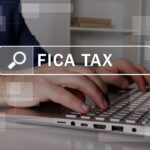IRS compliance is a time-consuming process for all businesses, but small businesses face unique challenges.
One of the biggest being a small business usually has a small team, and this team doesn’t always include a tax professional.
This adds another layer of work for the business owner, it’s another hat that they must wear. Form 941, has become a pain point for small businesses over the last year.
The pandemic has not only changed the way they operate, but it has had many ripple effects, including the way they are required to report their quarterly information to the IRS.
For some context, Form 941 is a quarterly filed by employers that pay wages subject to income tax, social security tax, or Medicare tax withholding.
Once an employer files their first Form 941, they are required to file with the IRS each quarter as long as the business is open.
Post Contents
Get Familiar with Form 941 Before You File It
This is a must for small businesses! Form 941 has undergone some change or update nearly every quarter over the past year.
It may only be a small change, but you should be aware of it before you sit down to file (especially if you wait until the last minute).
Giving yourself enough time to file Form 941 for your business is key. Not only will you need to be familiar with the form, but you will need to collect all the information required.
This includes wages, withholdings, and any tax credits claimed during the quarter.
The good news is that there are no major changes to Form 941 for the upcoming third quarter, however, there is a minor change that business owners should be aware of.
This brings us to our next point.
Know Which 941 Worksheets You Need to Complete
Last quarter the IRS reworked Form 941 completely, this included expanding the single worksheet to five worksheets total.
This was a big adjustment, the good news is that the Worksheets haven’t changed, just which ones are needed for the third quarter.
Going forward for the third and fourth quarter employers will need to file Worksheet 4 rather than Worksheet 2 to calculate the refundable and non-refundable portions of the employee retention credit.
Worksheet 4 is still two steps, but the way you calculate the portions of the employee retention credit is a bit different, so be sure to use Worksheet 4 or you will end up with the wrong amounts on Lines 11c and 13d on your Form 941.
Remember, when it comes to worksheets, you only need to complete the worksheets that apply to your business. These are all the 941 worksheets that you could potentially use for the third quarter:
- Worksheet 1. Credit for Qualified Sick and Family Leave Wages for Leave Taken Before April 1, 2021
- Worksheet 3. Credit for Qualified Sick and Family Leave Wages for Leave Taken After March 31, 2021
- Worksheet 4. Employee Retention Credit for Third and Fourth Quarters of 2021 Only (Qualified Wages Paid After June 30, 2021)
- Worksheet 5. COBRA Premium Assistance Credit
File Your Form 941 Electronically in Minutes
One of the biggest ways to save yourself some time and stress this quarter is by e-filing Form 941. This used to be a pretty easy form to complete and mail to the IRS, but that is no longer the case!
There are now so many calculations that factor into your Form 941 filing that completing a paper copy leaves a lot of room for error.
Having your form rejected due to a simple miscalculation will only cause you additional stress and it could even result in IRS penalties.
By carefully choosing an e-file provider, you can not only save yourself time, but this increases the accuracy of your forms.
It is proven by the IRS that there is a dramatic difference in the accuracy of the paper forms they process compared to the e-filed forms that they process. This is just one of the reasons that e-filing is the IRS-preferred filing method.
Always be picky when choosing an e-file provider, they must be IRS authorized and consider the features that they have to offer.
When filing electronically, the actual filing process will be easier, if the provider offers automatic calculations, this is a big help!
Not only is it proven that e-filing yields more accurate forms, but the IRS can process your form and notify you of its status in a shorter time frame.
When you mail a paper copy, there isn’t really any way to know if the form made it to the IRS in the first place!
By e-filing and starting your form preparation early, you can count on a stress-free, deadline!






























